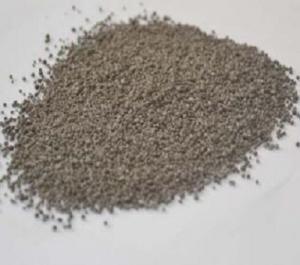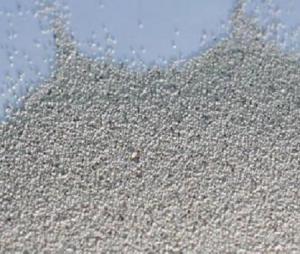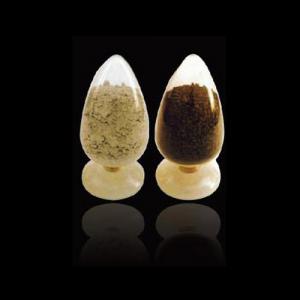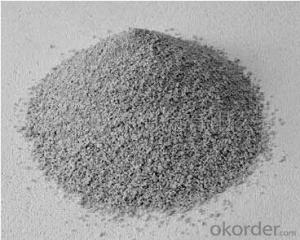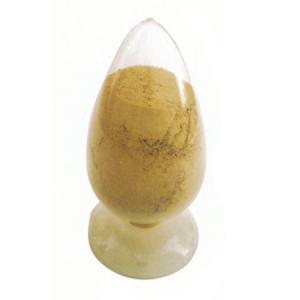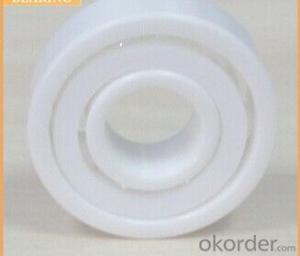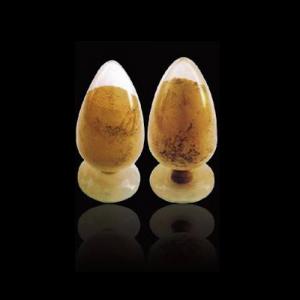Covering Fluxes Covering Powders For Steel Mill
- Loading Port:
- Tianjin
- Payment Terms:
- TT or LC
- Min Order Qty:
- 10 m.t.
- Supply Capability:
- 100000 m.t./month
OKorder Service Pledge
OKorder Financial Service
You Might Also Like
Product Description:
We offer a series of covering flux products including both fine-grained powders and hollow granulated fluxes, so it’s possible for customer to select a suitable material according to operational parameters of each specific application.
Generally for tundish application factors affecting product performance result to be steel grade, exposed steel surface to be covered, casting time, and sequence index.
Regarding ladle applications, critical factors are chiefly the amount and the characteristics of the refining slag.
Increasing demand of better quality steel and subsequent use of high performance basic tundish lining material boosted researching and developing of active basic tundish powders assuring high covering, insulating properties and low corrosion activity.
Moreover, effective NMI (non-metallic inclusions) absorption capability is provided by specific viscosity and surface tension of molten slag layer in direct contact with molten steel.
Plant experience in using these active basic tundish powders gave improved steel cleanness.
Insulating covering fluxes for tundish and ladle
We offer two types of insulating covering fluxes :
Rice ash, with high levels of thermal insulation
Fly ash mixtures, with high levels of thermal insulation and protection against re-oxidation
Insulating MgO-based covering fluxes
Spray-dried covering powders based on magnesite and with very low silica content, with good thermal insulation properties, protection against re-oxidation and low refractory erosion.
Active basic powders
We offer two types of active basic powders:
Active basic powders for tundish (CaO-based) in fine-grain powders and granulated form to maximize absorption of NMI.
Calcium aluminate based material is well known to give metallurgical active slags able to prevent sulphur pick up to the steel. It offers the potential for oxide pick-up and protection against re-oxidation. It is a material obtained by complete melting in high-capacity furnaces of bauxite and limestone. Because such materials have poor insulating properties, it is necessary to add an additional insulating compound on top.
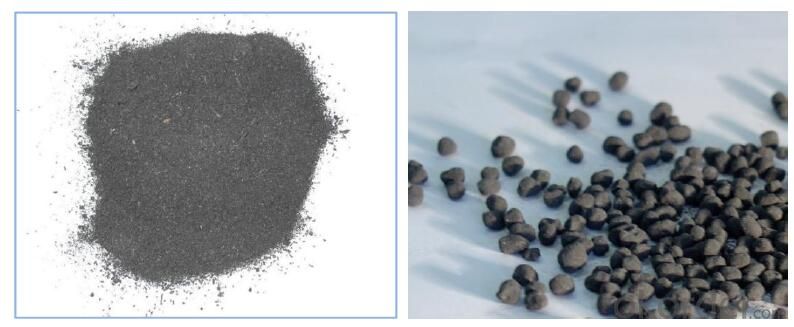
FAQ
Q:Are you a trading company or manufacturer?
A:CNBM is a large-scale central governmental industrial group with its own manufacturing sector, research and development sector, trading sector and logistics sector.
Q:I have some special requirement about specifications.
A:We have a well-rounded product range, which endows us with the capability of applying many special specifications. Please feel free to contact us with yours.
Q:Do you accept OEM service?
A:Yes, we do.
Q:What is your delivery time?
A:It depends on the size/complexity of your order and our own production schedule. Usually we provide a faster delivery than the industry's average.
Q:What is the payment term?
A:Our payment terms are negotiable.
Q:Can I have my own logo on the product?
A:Sure, we can apply your own logo on the products according to your drawings.
- Q:How do monolithic refractories contribute to the reduction of downtime in iron and steel plants?
- Monolithic refractories contribute to the reduction of downtime in iron and steel plants by providing superior thermal insulation and resistance to high temperatures, reducing the risk of equipment failure and unplanned shutdowns. Their ability to withstand extreme conditions, such as molten metal and slag, allows for extended operational periods without frequent maintenance or replacement. Additionally, monolithic refractories offer quick and easy installation, repair, and maintenance, minimizing the time required for downtime and ensuring a more efficient and productive operation in iron and steel plants.
- Q:How are monolithic refractories used in the repair and maintenance of ladles and tundishes?
- The steel industry extensively utilizes monolithic refractories for the repair and maintenance of ladles and tundishes. These refractories are specifically designed to endure the extreme conditions encountered during the steelmaking process, including high temperatures, thermal shock, and chemical erosion. In the case of ladle repair, monolithic refractories are employed to line the inner walls. Ladles are exposed to intense heat and corrosive molten metal, and the refractory lining serves as insulation and protection against these harsh circumstances. Additionally, the lining helps to maintain the desired temperature of the molten metal, ensuring it remains in an appropriate state for processing. Regarding tundishes, monolithic refractories are used to line the bottom, sides, nozzle, and impact pad. Tundishes are responsible for distributing molten metal to multiple casting molds and are subject to high temperatures and thermal shocks. The refractory lining helps to sustain the necessary temperature and prevent any leakage of molten metal. During the repair and maintenance process, monolithic refractories are applied as dense, high-strength materials that are easy to shape and install. They can be formed into various shapes, such as bricks, castables, and gunning mixes, depending on the specific requirements of the ladle or tundish. These refractories are frequently applied using specialized techniques, such as gunning or casting, to ensure proper adhesion and durability. In addition to their thermal and chemical resistance properties, monolithic refractories also possess excellent mechanical strength and resistance to abrasion. This is particularly crucial in ladles and tundishes, as they experience constant wear and tear from the movement of molten metal and the handling of refractory materials during repair and maintenance. Overall, monolithic refractories play a vital role in the repair and maintenance of ladles and tundishes in the steel industry. They provide the necessary insulation, protection, and durability required to withstand the demanding conditions of steelmaking.
- Q:How do monolithic refractories improve the thermal efficiency of iron and steel furnaces?
- Monolithic refractories improve the thermal efficiency of iron and steel furnaces by providing superior insulation and heat containment properties. These refractories are designed to withstand extreme temperatures and resist thermal shock, ensuring minimal heat loss from the furnace. Additionally, monolithic refractories have low thermal conductivity, allowing for better heat distribution and retention within the furnace. This enhanced thermal efficiency leads to reduced energy consumption and higher productivity in the iron and steel manufacturing process.
- Q:What are monolithic refractories?
- Monolithic refractories are a type of heat-resistant materials used to line high-temperature industrial equipment such as furnaces, kilns, and reactors. Unlike traditional refractories, which are made of pre-formed bricks or shapes, monolithic refractories are a single, solid piece that can be easily shaped and installed. They are composed of various aggregates, binders, and additives, providing excellent thermal insulation and resistance to extreme temperatures, chemical attacks, and mechanical stress. Monolithic refractories offer flexibility, cost-effectiveness, and improved installation efficiency compared to traditional brick refractories.
- Q:What are the quality control measures for monolithic refractories in the iron and steel industry?
- The quality control measures for monolithic refractories in the iron and steel industry include strict material selection, thorough testing of raw materials, regular inspection and maintenance of refractory linings, and continuous monitoring of performance during operation. Additionally, adherence to industry standards and specifications, implementation of quality management systems, and collaboration with suppliers and customers to address any quality issues are also important measures in ensuring the quality of monolithic refractories in the iron and steel industry.
- Q:What are the specific requirements of monolithic refractories for soaking pit applications?
- Monolithic refractories for soaking pit applications must meet several specific requirements. Firstly, they need to withstand high temperatures and thermal cycling. This means they must be able to endure temperatures exceeding 1500 degrees Celsius without significant degradation. The longevity and durability of the refractories depend on this capability. Secondly, the refractories must have good thermal shock resistance. Since soaking pits often experience rapid changes in temperature, the refractories must be able to handle these fluctuations without cracking or spalling. This is vital to maintain the refractories' integrity. Chemical attacks are another concern in soaking pit applications. Molten metal, slag, and other corrosive substances are present, so the refractories must have excellent chemical resistance. This prevents erosion and chemical reactions. Withstanding the corrosive effects of molten metal and slag, as well as potential chemical reactions, is crucial. Furthermore, mechanical stresses, such as abrasion and impact, occur in soaking pits due to the movement and handling of metal ingots. The monolithic refractories should possess good mechanical strength and abrasion resistance to withstand these stresses. They should be able to resist wear and tear caused by heavy loads and avoid any mechanical failure. Lastly, the refractories used in soaking pits should be easy to work with and install. This ensures efficient and effective lining of the pit, minimizing any gaps or cracks that could lead to heat loss or chemical penetration. In summary, monolithic refractories for soaking pit applications must meet specific requirements regarding high temperature resistance, thermal shock resistance, chemical resistance, mechanical strength, and ease of installation. Fulfilling these requirements guarantees that the refractories can withstand the harsh conditions of soaking pits and maintain their performance and integrity over an extended period.
- Q:How does the composition of monolithic refractories impact their performance?
- The composition of monolithic refractories plays a crucial role in determining their performance. Monolithic refractories are essentially unshaped refractory materials that are used to line furnaces, kilns, and other high-temperature equipment. They are preferred over traditional brick and mortar refractories due to their ease of installation and ability to conform to complex shapes. The composition of monolithic refractories includes various components such as aggregates, binders, and additives. The type and proportion of these constituents significantly influence the physical, mechanical, and thermal properties of the refractory material. Aggregates are the major component of monolithic refractories and provide the structural integrity. They can be made of various materials like alumina, silica, magnesia, and carbon. Each aggregate has its own unique properties that determine the refractory's resistance to heat, chemical attack, and mechanical stress. For example, alumina aggregates offer excellent resistance to high temperatures and chemical corrosion, while carbon-based aggregates are preferred for their high thermal conductivity. Binders are added to the mix to provide cohesion and improve the refractory's strength. Common binders include clay, calcium aluminate cement, and colloidal silica. The selection of binders depends on the desired strength, workability, and setting time of the refractory material. Additives are incorporated in the composition to enhance specific properties. They can improve the refractory's resistance to thermal shock, abrasion, or chemical attack. Additives like zirconium oxide, silicon carbide, and graphite are often used to enhance the performance of monolithic refractories in specific applications. The proper combination and proportion of these constituents are crucial for achieving the desired performance of monolithic refractories. The composition affects the refractory's thermal conductivity, thermal expansion, density, porosity, and chemical resistance. For instance, a higher alumina content would improve the refractory's resistance to high temperatures and chemical corrosion, while a higher silica content would enhance its insulating properties. In conclusion, the composition of monolithic refractories has a significant impact on their performance. The selection of aggregates, binders, and additives must be carefully considered to achieve the desired properties and ensure optimal performance in specific high-temperature applications.
- Q:How do monolithic refractories withstand the alkali attacks in cement kiln applications?
- Monolithic refractories withstand alkali attacks in cement kiln applications due to their unique composition and properties. These refractories are made of high-quality materials such as silica, alumina, and magnesia, which have excellent resistance to alkali reactions. Additionally, they are designed to have dense and compact structures, limiting the penetration of alkali compounds into the refractory material. The dense structure also helps in reducing the permeability of the refractory, preventing alkali infiltration. Moreover, monolithic refractories often have a high melting point, which further enhances their resistance against alkali attacks. Overall, the combination of material composition, compact structure, and high melting point enables monolithic refractories to withstand the harsh alkali environment of cement kilns.
- Q:How do monolithic refractories perform in torpedo ladle applications?
- Due to their excellent performance and durability, monolithic refractories are commonly used in torpedo ladle applications. Torpedo ladles are utilized in the steelmaking process to transport and pour molten metal from the blast furnace to the steelmaking furnace. Also known as unshaped refractories, monolithic refractories are made from a single material and can be applied as a cohesive mass, making them highly versatile and easy to install in the torpedo ladle. In torpedo ladle applications, monolithic refractories offer numerous advantages. Firstly, they possess high heat resistance, enabling them to endure the extreme temperatures and thermal shocks experienced during the transfer and pouring of molten metal. This ensures that the refractories do not crack or fail under these harsh conditions. Additionally, monolithic refractories exhibit excellent corrosion resistance properties, which is imperative in torpedo ladles where the molten metal can be highly corrosive. They can withstand the aggressive chemical environment and prevent chemical reactions that could result in refractory deterioration. Moreover, monolithic refractories possess good thermal insulation properties, reducing heat loss from the molten metal and promoting energy efficiency. This helps to maintain the desired temperature of the metal, ensuring optimal steelmaking conditions. Furthermore, monolithic refractories offer strong mechanical strength and resistance to abrasion, making them highly suitable for torpedo ladle applications where the refractory lining is subjected to mechanical stress and wear. Overall, monolithic refractories perform exceptionally well in torpedo ladle applications due to their high heat resistance, corrosion resistance, thermal insulation properties, and mechanical strength. They can endure the extreme conditions and provide a reliable and long-lasting lining for torpedo ladles in the steelmaking industry.
- Q:How do monolithic refractories perform in high-temperature environments?
- Due to their unique characteristics, monolithic refractories are highly effective in high-temperature environments. Unlike traditional refractories made of multiple bricks or tiles, these refractories are composed of a single, continuous composition. This monolithic structure offers several advantages when it comes to performance in high-temperature conditions. First and foremost, monolithic refractories exhibit excellent thermal shock resistance. They can endure rapid temperature changes without cracking or spalling. While high temperatures can impose significant stress on materials, the monolithic structure allows for better expansion and contraction, minimizing the risk of damage. Furthermore, monolithic refractories possess high resistance to chemical attack. In high-temperature environments, aggressive chemical agents are often present, which can corrode and erode traditional refractory materials. However, the monolithic composition is typically designed to be chemically inert, creating a protective barrier against these corrosive elements. Moreover, monolithic refractories offer superior strength and durability at high temperatures. Their single composition ensures a dense and compact structure, reducing the likelihood of cracking or breaking under extreme thermal conditions. This strength enables them to maintain their integrity and performance even in the most demanding environments. Additionally, monolithic refractories can be easily installed and repaired. Unlike traditional refractories that demand precise brick or tile placement, monolithic materials can be poured or sprayed into place, adapting to any shape or size. This flexibility expedites installation, making it more cost-effective and reducing downtime and maintenance costs. Overall, monolithic refractories excel in high-temperature environments due to their thermal shock resistance, chemical inertness, durability, and ease of installation. Their capacity to withstand extreme heat and harsh conditions makes them the preferred choice for industries such as steel, cement, glass, and petrochemicals, where high temperatures are prevalent.
1. Manufacturer Overview |
|
|---|---|
| Location | |
| Year Established | |
| Annual Output Value | |
| Main Markets | |
| Company Certifications | |
2. Manufacturer Certificates |
|
|---|---|
| a) Certification Name | |
| Range | |
| Reference | |
| Validity Period | |
3. Manufacturer Capability |
|
|---|---|
| a)Trade Capacity | |
| Nearest Port | |
| Export Percentage | |
| No.of Employees in Trade Department | |
| Language Spoken: | |
| b)Factory Information | |
| Factory Size: | |
| No. of Production Lines | |
| Contract Manufacturing | |
| Product Price Range | |
Send your message to us
Covering Fluxes Covering Powders For Steel Mill
- Loading Port:
- Tianjin
- Payment Terms:
- TT or LC
- Min Order Qty:
- 10 m.t.
- Supply Capability:
- 100000 m.t./month
OKorder Service Pledge
OKorder Financial Service
Similar products
New products
Hot products
Related keywords

